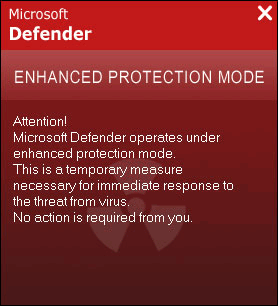MuskOff Ransomware
Researchers recently unearthed MuskOff, a ransomware-type program that falls within the broader category of threatening software designed to encrypt files and then demand payment for their decryption. When the MuskOff Ransomware is executed on a compromised system, it initiates the encryption process, modifying filenames by appending a '.MuskOff' extension. To illustrate, a file originally labeled '1.jpg' transforms into '1.jpg.MuskOff,' and '2.png' becomes '2.png.MuskOff,' and so forth.
Following the completion of the encryption process, MuskOff generates a ransom note named 'read_it.txt' to communicate the file encryption to the victim and demand payment for the decryption key. It's worth noting that MuskOff is derived from the Chaos Ransomware family, indicating a connection to this particular strain of harmful software.
The MuskOff Ransomware Extorts Victims for Thousands of Dollars
The message delivered by the MuskOff Ransomware informs victims that their files have undergone encryption and emphasizes that the sole avenue for recovery involves complying with the attackers' demands. The cybercriminals demand a payment of 1500 USD in BTC (Bitcoin cryptocurrency) for the release of a decryption solution.
A critical discrepancy arises when comparing the listed BTC amount in the message (0.1473766) with its conversion to dollars, which, at the time of writing, exceeds 5000 USD. It's crucial to note that cryptocurrency exchange rates are subject to constant fluctuations. Despite the promise of sending the decryption software upon payment, victims often find themselves without the necessary keys or tools to decrypt their data even after meeting the ransom demands.
Given this common occurrence, it is strongly advised against making the payment. Not only does this action fail to guarantee file recovery, but it also perpetuates and supports illegal activities. However, while the removal of MuskOff Ransomware from the operating system can prevent further data encryption, it does not restore files that have already been compromised. Victims should prioritize alternative methods of recovery and consult with cybersecurity professionals to mitigate the impact of such attacks.
Make Sure to Safeguard Your Data and Devices against Malware Threats
To safeguard their data and devices against malware threats, users can adopt a comprehensive approach that combines preventive measures, proactive habits, and responsive actions. Here are key strategies:
- Use Reliable Security Software:
Install reputable anti-malware software on your devices. Keep the software updated to ensure it can identify and address the latest threats.
- Regular Software Updates:
Be certain that your operating system, software applications, and anti-malware programs are regularly updated. Software updates are often used to deliver security patches that address vulnerabilities exploited by malware.
- Exercise Caution with Email Attachments and Links:
Be extra cautious when opening email attachments or interacting with links, especially if the email is unexpected or comes from an unknown sender. Verify the legitimacy of emails before interacting with any embedded elements.
- Use Strong Passwords:
Utilize strong, unique passwords for all your accounts, and take into consideration the use of a password manager to help you keep track of complex passwords without compromising security.
- Backup Your Data Regularly:
Regularly back up your important data to an external hard drive or a secure cloud service. In the event of a malware attack, having recent backups ensures you can restore your files without paying a ransom.
- Secure Your Wi-Fi Network:
Use strong encryption (WPA3 if available) for your Wi-Fi network and change default router login credentials. A secure Wi-Fi network helps prevent unauthorized access to your devices.
- Be Wary of Downloaded Content:
Only download software, applications and files from reputable sources. Avoid downloading content from suspicious websites, as these can be sources of malware.
- Educate Yourself and Stay Informed:
Stay on top of the latest malware threats and cybersecurity best practices. Regularly educate yourself and your team members on potential risks and how to recognize phishing attempts.
By adopting these practices, users can create a robust defense against malware threats and enhance the overall security of their data and devices.
The complete ransom note dropped on devices infected by the MuskOff Ransomware is as follows:
'----> Chaos is multi language ransomware. Translate your note to any language <----
All of your files have been encrypted
Your computer was infected with a ransomware virus. Your files have been encrypted and you won't
be able to decrypt them without our help.What can I do to get my files back?You can buy our special
decryption software, this software will allow you to recover all of your data and remove the
ransomware from your computer.The price for the software is $1,500. Payment can be made in Bitcoin only.
How do I pay, where do I get Bitcoin?
Purchasing Bitcoin varies from country to country, you are best advised to do a quick google search
yourself to find out how to buy Bitcoin.
Many of our customers have reported these sites to be fast and reliable:
Coinmama - hxxps://www.coinmama.com Bitpanda - hxxps://www.bitpanda.comPayment informationAmount: 0.1473766 BTC
Bitcoin Address: 17CqMQFeuB3NTzJ2X28tfRmWaPyPQgvoHV'


